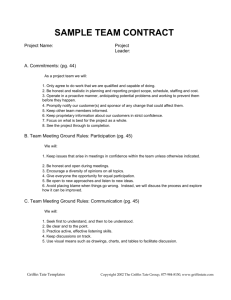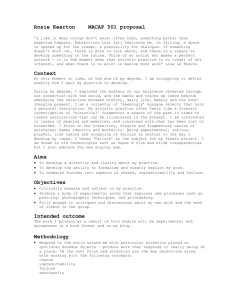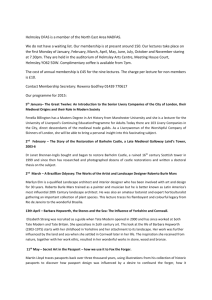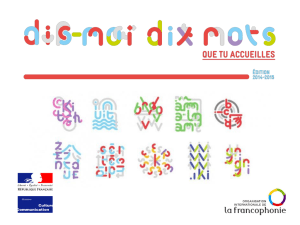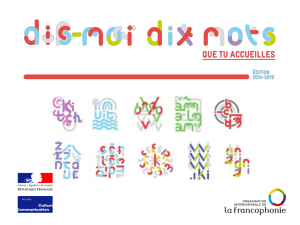- The Bartlett
advertisement
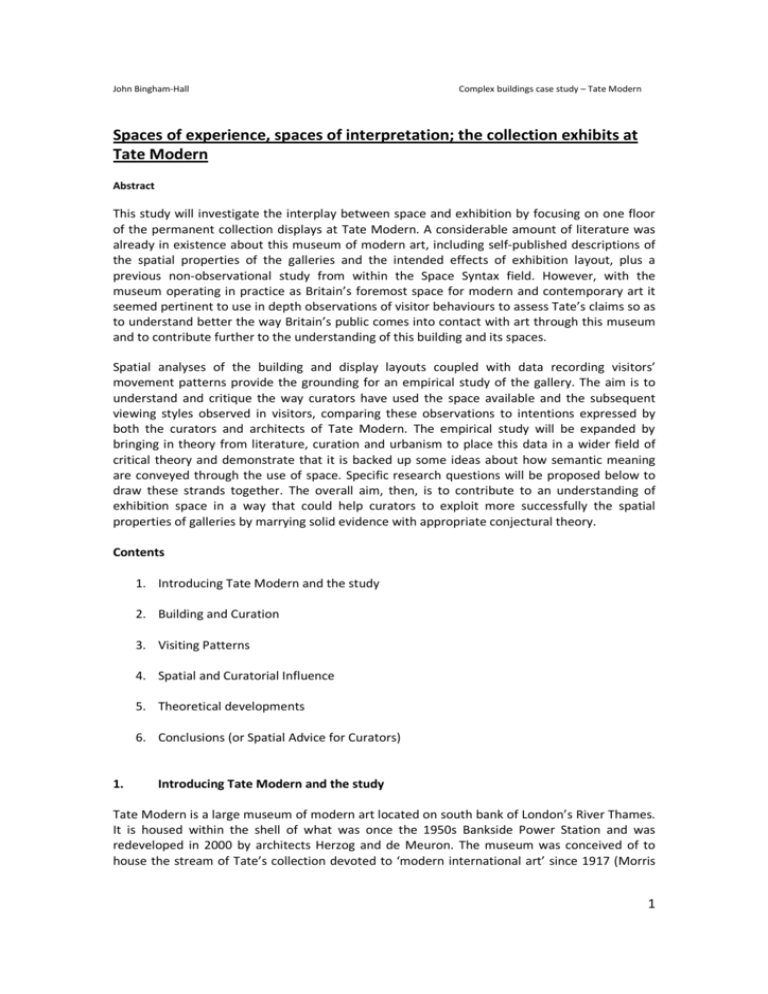
John Bingham-Hall Complex buildings case study – Tate Modern Spaces of experience, spaces of interpretation; the collection exhibits at Tate Modern Abstract This study will investigate the interplay between space and exhibition by focusing on one floor of the permanent collection displays at Tate Modern. A considerable amount of literature was already in existence about this museum of modern art, including self-published descriptions of the spatial properties of the galleries and the intended effects of exhibition layout, plus a previous non-observational study from within the Space Syntax field. However, with the museum operating in practice as Britain’s foremost space for modern and contemporary art it seemed pertinent to use in depth observations of visitor behaviours to assess Tate’s claims so as to understand better the way Britain’s public comes into contact with art through this museum and to contribute further to the understanding of this building and its spaces. Spatial analyses of the building and display layouts coupled with data recording visitors’ movement patterns provide the grounding for an empirical study of the gallery. The aim is to understand and critique the way curators have used the space available and the subsequent viewing styles observed in visitors, comparing these observations to intentions expressed by both the curators and architects of Tate Modern. The empirical study will be expanded by bringing in theory from literature, curation and urbanism to place this data in a wider field of critical theory and demonstrate that it is backed up some ideas about how semantic meaning are conveyed through the use of space. Specific research questions will be proposed below to draw these strands together. The overall aim, then, is to contribute to an understanding of exhibition space in a way that could help curators to exploit more successfully the spatial properties of galleries by marrying solid evidence with appropriate conjectural theory. Contents 1. Introducing Tate Modern and the study 2. Building and Curation 3. Visiting Patterns 4. Spatial and Curatorial Influence 5. Theoretical developments 6. Conclusions (or Spatial Advice for Curators) 1. Introducing Tate Modern and the study Tate Modern is a large museum of modern art located on south bank of London’s River Thames. It is housed within the shell of what was once the 1950s Bankside Power Station and was redeveloped in 2000 by architects Herzog and de Meuron. The museum was conceived of to house the stream of Tate’s collection devoted to ‘modern international art’ since 1917 (Morris 1 John Bingham-Hall Complex buildings case study – Tate Modern 2006, p.22) and though the exterior of the building remains largely untouched it can, in the interior, be taken as a purpose-built space with an entirely new layout. Tate Modern has gone on to be the world’s most popular modern art gallery with around 4.7 million visitors every year (Bayley 2010). Although the museum is not publicly owned this huge popularity has led it to be perceived generally as Britain’s foremost modern museum. It is proposed here that the particular spatial properties and layout of the collection exhibits have a role in forming popular conceptions of modern art and indeed Morris states that ‘Tate Modern is…[a] powerful statement of contemporary cultural life’ (Morris 2006, p.26). To investigate this an analytic and observational study was undertaken of level 3 of the Tate Modern, which is free to enter and houses, across two separate wings, art from 1908 to 2008 relating to two separate themes named by Tate as ‘Poetry and Dream’ and ‘Material Gestures’ (Morris 2006, p.26). Figure 1 Firstly the phrase ‘modern art’ should be clarified. Alfred Barr, founding director of New York’s Museum of Modern Art (MoMA) points to the fluidity of the term modern in its varying use throughout history; it is constantly changing as what was once modern becomes past. However, what Barr calls ‘the colloquialism “Modern Art” in caps or quotes’ (Barr 1986, p.83) has acquired an amount of stability as a term due in part to his own ‘Chart of Modern Art’ (Barr 1986, p.92). “Modern Art” can thus be seen as historical, as opposed to new work which will be referred to as contemporary art. Barr’s chart (figure 1) traces Modern Art’s history from roots in Impressionism into two streams of abstraction, ‘geometric’ and ‘non-geometric’, which developed from the beginning of the twentieth century. He also mentions ‘Superrealist’ art on the premise that it is ‘advance-guard’ in its disregard for the importance of ‘plastic values’ in representing a scene as realistically as possible (Barr 1986, p.83). So whilst head of displays at Tate Modern Frances Morris states that Tate Modern aimed to address in its curation a state of affairs where many current artists are no longer willing to be subsumed into the canon of Modern Art it will be seen here that the main categories of geometric abstraction, non-geometric abstraction and avant garde Realism are represented at Tate Modern, if not laid out spatially as such rigid categories. In previous work investigating the interplay between space and curation at Tate, Kali Tzortzi has pointed to an ‘ahistorical’ arrangement of works and the tendency towards ‘conceptual’ groupings within compact visual fields defined by walled spaces; overlapping fields of view between cells are not exploited to allow inter-room relations (Tzortzi 2007, p.8). Focused, highly original curatorial statements within rooms are kept separate and can be well understood individually but the global structure of each wing dictates a sequence of rooms and implies a narrative, which is not reflected in the curation (Tzortzi 2007, p.9). Tzortzi also references Serota’s description of the visiting culture encouraged by this layout as a ‘machine for viewing works’ (Serota cited Tzortzi 2007, p.10); the given sequence of rooms requires minimal decision- 2 John Bingham-Hall Complex buildings case study – Tate Modern making on the behalf of the visitor. So whilst spatial categorization does not follow a traditional art history, as previously stated, it does however encourage that works be seen as distinct groups of Tate’s own creation. Through visitor observations and mapping of displays the particular historical narrative and the effects of configuration on visitors’ contact with this will be explored further. Tate director Nicholas Serota, in confronting the issue of planning a new museum of Modern Art, points to two possible approaches to curation: ‘experience or interpretation’ (Serota 1996). 'Experience' refers to grouping that can be perceived synchronously, as one might experience an environment rather than read a text; large works by a single artist or installation which on the local scale do not require curatorial intervention but speak for themselves. 'Interpretation' refers to the cognition of a curatorial theme, as might be the case in a room of smaller works by different artists with less obvious relations to one another, and is more analogous with text than with environment. These effects will be demonstrated in not only curatorial style but also visitor movement within space and properties of the space itself. So looking back on this existing literature some research questions have arisen, which will be approached in this study: 1. Are Tate’s curatorial and historical intentions actually borne out in layout and visiting patterns? 2. Is curatorial programme or spatial configuration the main factor determining movement and visiting styles? 3. How are ‘experience’ and ‘interpretation’ manifested spatially? 2. The Building and Curation Some further detail is needed here about the specific aims of both the curators and indeed the architects who are responsible for the layout we currently see at Tate Modern. Frances Morris, head of displays, describes (in a self-published ‘Handbook’ by Tate) how each section is organized around a ‘hub’ representing the key moment that changed the artistic landscape in relation to a particular theme; ‘Poetry and Dream’ (the emergence of the subconscious in art) and ‘Material Gestures’ (the elimination of external representation). These wings will be referred to as MG or PD. Subsidiary spaces are seen as ‘tributaries’ which allow ‘other stories to unfold’ (Morris 2006, p.26). In PD she describes ‘dense multilayered installation at the heart of this wing’ with ‘surrounding galleries [which] allow a range of artists to be seen in relation’ (Morris 2006, p.26). The visitor is asked to understand a key moment in art and subsequently see its later development, predecessors and contradictions. Herzog and de Meuron’s description of the spatial arrangement backs up Tzortzi’s assessment; ‘Tate Modern can thus be considered as a set of finite rooms linked by spatial or haptic experience’ – ‘distinct, solid-walled rooms’ with ‘no distractions’ (Herzog cited Ryan 2000, p.26). 3 John Bingham-Hall Complex buildings case study – Tate Modern Figure 2 Figure 3 4 John Bingham-Hall Complex buildings case study – Tate Modern Figure 4 Figure 2 shows the rooms as named and numbered by Tate, which I have categorized as ‘Movement’ (works from an accepted movement in art history), ‘Theme’ (works grouped according to a curatorial theme), ‘Artist’ (works only from a single artist) or ‘Grouped Artists (works from two or more artists with no overall theme given) – I will refer to them subsequently by their number preceded either by ‘PD’ or ‘MG’. Figure 3 shows these rooms grouped according to whether they form part of the ‘statement’ or the ‘development’ of the moment in art, or in opposition the ‘precursor’ or a ‘counteraction’ to the original statement, with the date range of each room shown. As would be expected, statement rooms are grouped mainly closest to the entrance, with later development in the deeper spaces. Interestingly though, in MG the one precursor room is allowed to interrupt the statement whereas in PD the counteraction is separated into the two room sub-sequence. Representing these rooms on a j-graph (figure 4), a hierarchy can be seen. Nine of the twelve artist rooms lie either off the main ring of spaces or at the deepest points of that ring whereas all the theme rooms lie on the main ring except for PD9, which is a counteraction (of ‘Realisms’ against the Surreal focus of PD) and PD8 which is a group of very recent, subversive works. There is a privilege afforded to older works and to those supporting the statement of the wing. Figure 5 A pattern can also be seen in the style of hanging in relation to depth. Figure 5 shows the breakup of convex spaces across the whole floor with images from the spaces shallowest and deepest from the access. A relatively traditional gallery style of individually hung paintings and sculptures is first encountered with the deepest spaces reserved for more experimental installations. It also points though to a fragmentation of the hub rooms whose furthest sections are deeper into the building than the first subsidiary spaces. The axial analysis of the floor plate 5 John Bingham-Hall Complex buildings case study – Tate Modern demonstrates further this fragmentation (figure 6). A long east-west axis passes through both wings and the central access, forming a logical route through the series of aligned entrances, bypassing large sections of the hub room and creating the global sequence-dictating structure pointed out by Tzortzi. This line is the most integrated, but at remove from this route the lines become quickly quite segregated. At the opposite north side of the gallery to this dominant axis doors are disaligned and axes are shorter, slanted and offer more choice. This visual alignment through doors is demonstrated by the visual graph analysis (figure 7), which picks up the dominant axis along the southern side and shows that visual integration occurs on the northern side where views open up from this dominant axis. Otherwise the northern side is visually segregated at the global level, with parts of the hub room in MG hidden from view from the south and showing integration as low as the deepest gallery rooms. So the curation here intends a situation in which an orthodoxy of hung paintings and freestanding sculpture occupies a large initial room and is presented as a primary, singular message. However, the integration of the east-west axis links a enfilade-like sequence of rooms together as a chain in a way that is spatially more suggestive of a single narrative than the spatially fragmented ‘hub’ rooms. There is logical circular route through the gallery which is at odds with Morris’ intention that each subsidiary room should be seen in direct relation to the main statement. This circular route then actually demonstrates more of a chronology than seems to be intended, with newer work generally further along the route and thus structured in the canonical way Morris argues against. This is broken though by the clear delineation of each grouping of works within a room so, as noted by Tzortzi, any narrative overlap made possibly by the space is not translated into the curation. Figure 6 Figure 7 6 John Bingham-Hall 3. Complex buildings case study – Tate Modern Visiting Patterns Observations were undertaken at Tate Modern in order to investigate visitor behaviours in relation to the spatial properties discussed previously. Two minute counts of people passing each room threshold for the morning, afternoon and evening for two days were made, and fifty traces of people entering each wing, with path, stopping points and views of artworks recorded for ten minutes for each person. This section will be a description of the results, with more theoretical analysis synthesized with a discussion of the space and curatorial styles in the next section. Figure 8 As would be expected the highest flows per minute were recorded at the entrance. Movement (average number of passers per minute – figure 8) then fell away fairly dramatically however for the rest of the sequence. So whilst there is a dominant route at play not all visitors do pass straight from the entrance through to the next room along the axis. In both wings the lowest flow rates were at the deepest part of the ring of circulation rather than at the end of the subsequence of two rooms ending at MG9 and PD10. Interestingly, while both of these rooms are dead ends they are penetrated by axial lines which start on the ring of circulation and end at an open angle to the side wall of the room (refer to figure 6), suggesting continuity of space (Hillier 2004, p.175), with the perpendicular ‘dead end’ of the room invisible. In both wings the lowest flow rates occur just after a point at which an axis aligned through several doors end abruptly at a right angle, even though the ring of circulation continues. Figure 9 shows all stopping points along with a convex breakup coloured from red for the greatest density of stopping to blue for the least. Notably, having treated PD2 and MG2 as composites of convex spaces rather than named wholes, it is clear that the parts further from the door are much less stopped in. Figure 10 shows all the traces overlaid onto the plan. There is a clear concentration of movement along the east-west axis but with varying levels of deviation from the dominant axis in each room. The northern side of the building, where the axials were more overlapping, sees less of a dominant route but also less exploration within rooms. Whilst directionality is not represented here, it is clear that a majority of people did follow the path through the hub room and straight to the first subsidiaries but there were certainly a considerable number taking alternative paths, as suggested by the falling away of movement flows demonstrated above. Qualitatively distinct types of movement were also discerned within the traces (figure 11). Explorative viewing was characterized by a tendency towards the edge of rooms (closer to artworks), crossing across rooms and looping, whereas directed viewing was centered, onedirectional and with isolated deviations to certain works. Each visitor tended towards one or the 7 John Bingham-Hall Complex buildings case study – Tate Modern other but it can also be seen that certain rooms multiplied or cancelled out one or the other effect: PD2 encouraged greater exploration by both types whereas MG8 saw little deviation from either type. Whilst the development of a quantitative method for this categorization was outside the scope of this study, the morphological features described above were clear from visual recognition and so as a heuristic analysis it was deemed to provide a sufficient starting point for talking about these behaviours. Figure 9 Figure 10 8 John Bingham-Hall Complex buildings case study – Tate Modern Figure 11 The final set of data presented on figure 12 is that of the levels of viewing for each artwork. Viewing was defined as stopping and focusing the gaze on a particular work as opposed to walking past with eyes turned towards the wall. An assumption was taken that the museum would like for visitors to take enough time to see a work from a static point. For this reason, this data was not taken for PD2, as the tiered hanging style here prevented accurate observation. The highest levels of viewing were recorded for large works with a high visual impact or works with a particular historical importance rather than those in any particular location. With no scope for a detailed analysis of viewing in relation to spatial properties in this study, it will suffice to say that viewing patterns seem to be reliant much more on the draw of individual works rather than any privilege afforded by positioning. Figure 12 9 John Bingham-Hall 4. Complex buildings case study – Tate Modern Spatial and Curatorial Influence From definitions given previously it is clear that both experience and interpretation are at play in Tate’s curation. A room labeled with the name of a particular artist does not call for an effort of interpretation on the viewer’s behalf and a movement pattern demonstrating this is evident in, for example, MG8. Three large, abstract and fairly simplistic works adorn the walls (figure 13) and the effect on both explorative and directed viewers was to focus movement into the center, with no crossing or looping and only five stops; we might say that simply passing through this room gave an experience that was sufficient. A group of works labeled with the abstract theme ‘Poetry and Dream’ (figure 14) is, according to Serota’s definitions, curatorially interpretative as relations between works are not obvious in a single moment of experience. From the evidence it seems that the dense collection of paintings and sculptures encourages varied, multi-directional paths through the room. Thus we might say that visitors are seeing works in a sequence of their own creation and rendering their own interpretation of the role of poetry and dream in early to mid twentieth century art. So we can say that in this room both the curation and the viewing are interpretative. But what about a situation where the curation is interpretative but the behavior of visitors seems not to reflect this? PD3 is a small room labeled with the abstract theme ‘Elements of Chance’ and containing a display of nine relatively small and detailed works. Close viewing ought to be necessary here too for comprehension of the theme, yet the traces show both types of visitor tending to pass directly through the room with little stopping or deviation. If curatorial intent is not to blame for this we are left either with the artworks themselves or the space they inhabit as an explanation. Whilst the former option is compelling a possible reason will be proposed here for the latter. Figure 13 Figure 14 10 John Bingham-Hall Complex buildings case study – Tate Modern Figure 15 To view Tate’s vast collection across forty-two rooms requires a considerable undertaking. With first time visitors accounting for 36% of traffic (? 2010) it might be reasonable to assume that a tactic of maximizing coverage may be employed by a considerable number of people. One way to do this is to follow and complete the longest axis from any given point. Stopping where there is no choice of direction is inefficient, as is entering a room which is visibly a dead end; both these tactics would decrease the chance of entering or at least seeing all rooms within the sequence within a given time. The ‘segment map’ splits axials into sections between points of choice (figure 15). The underused room PD3 lies on a longer segment than either the first section of PD2 or subsequent PD5, both of which see greater levels of stopping. On entering the room one’s first view is of the exit and with no choice or interruption to direct movement it seems that few visitors are encouraged to stop, with completing the line of sight a greater priority. This axis ends at a right angle on the western edge of PD5, in which movement seems to slow and the density of stopping is increased. So it seemed that not only did more people follow the longest line of sight but that they stopped less where segments were longer. This was tested by taking an average of the segment lengths passing through each threshold and correlating it with the observed flow rates, giving a striking correlation of r²=0.73. Outliers to the trend line were partly due to the greater popularity overall of PD and so the figures were separated giving r²=0.94 in the busier wing. It seems fairly convincing that in this kind of situation more people are drawn towards places were a greater distance can be covered without choice or interruption and that segment breaks (i.e. choice or direction changes) encourage stopping but reduce flow overall. Nonetheless, the draw of particular works cannot be overlooked. MG5 and PD5 are almost identical in both their size and their syntax within the spatial system yet MG5 saw 80% more stopping, plus significant crossing and looping of movement traces which was not seen in PD5. 11 John Bingham-Hall Complex buildings case study – Tate Modern This room contained a Miro (Miro 1964), which proved to be one of the top five viewed works, along with Léger (Leger 1948), Matisse (Matisse 1953) and Hepworth (Hepworth 1956). These are well know works which we might call ‘attractors’ (Hillier et al. 1993, p.29) so as previously proposed, certain artworks seemed to have a draw strong enough to overcome the properties of their location. Another kind of attraction possessed by certain artworks, which is able to enact on the visitor across visible boundaries, is audibility. As mentioned above, MG9 and PD10 showed greater flow rates at their thresholds than might be expected in comparison with rooms on the ring of circulation at similar depths. Whilst open-angled axiality was proposed as a reason, we might also attribute this to the draw of sound, which emanates from works in both these rooms. They are clearly audible as far as MG2 (northern section) and PD2 (northern section) respectively yet invisible up until the threshold to each room. A sound disembodied from its source becomes mysterious and calls for investigation and this was reflected by these rooms’ flow rates being above the trend line in correlation. 5. Theoretical Developments Serota’s curatorial techniques ‘experience’ and ‘interpretation’ have been demonstrated not only as effects of a particular arrangement of artworks but interpreted as movement patterns of individual visitors. This dichotomy suggested by Serota bears striking similarity to Barthe’s distinction of the ‘readerly’ and the ‘writerly’ (Barthes 1970) in relation to texts, which in his definition could include the curatorial message of a group of artworks. The readerly text is a fixed and complete reference to an external set of ‘signifieds’, whether fictional or real, and must be read in full to be understood; a fixed curatorial statement about art history, for example. Barthe’s hypothetical ‘writerly’ text is one containing ‘a galaxy of signifiers’ (Barthes 1970, p.5) (which here could be thought of as individual artworks) whose semantic interrelations are pluralistic, reversible and unfixed. Clearly a room at the Tate, named and explained purposefully, does not display these characteristics. However the interesting similarity comes when Barthes suggests that we might explore a writerly text ‘the way a fly buzzes around a room: with sudden, deceptively decisive turns’ (Barthes 1990, p.31). With poetic license, this could well be a description of our exploratory movement traces. So, although the intended curatorial message is fairly fixed, visitors are not forced spatially or institutionally to ‘read’ every element of the message and are thus free in practice to ‘write’ their own meaning. A set meaning, or readerly text, exists synchronously in the configuration of artworks arranged across space but in diachronous, embodied action new meanings are written as visitors carve distinct paths through space. 6. Conclusions (or Spatial Advice for Curators) So can we deduct from these analyses some advice for curators in relation to space, which will also serve as a conclusion to this study and answer the initial research questions? In response to Tzortzi’s plan-based analysis it seems that whilst the fixed building itself is indeed set up as a series of quite self-contained rooms the observations have shown evidence that they are not treated as such by visitors, who often pass straight along the axis through several rooms without exploring each as an entity. The main statements of each wing might then have more coherence if thought of linearly, in line with the general movement flow along the dominant axis, perhaps as a more traditional chronology. This part of the building itself does suggest efficiency as a ‘machine for viewing art’ (as Tzortzi and Serota agreed) but in trying to create a 12 John Bingham-Hall Complex buildings case study – Tate Modern new history in which chronological hierarchy is replaced by a dialectic between statement and response (Morris’ ‘hub’ and ‘subsidiary’ rooms) the curators have actually worked at odds with this efficiency. The danger here is that whilst the various subsidiaries are intended as equal to each other there is actually a hierarchy set up in which certain practices such as installation, in the deepest rooms of the sequence, are distanced from the main statement. According to Hillier’s interpretation of spatial depth this could be read as either a privileged sanctification (Hillier 2007, 175), perhaps acting to reinforce their strangeness, or control (Hillier & Hanson 1984, 184) reinforcing their secondary status. Either way, in trying to get out from under the traditionally epochal layout of Modern Art derived from Barr’s MoMA model Tate seem to be reinforcing a new kind of orthodoxy of material difference in the work. So in this sense it does not seem that Tate’s express intentions were borne out by the real situation. Perhaps instead the hierarchical nature of this spatial network should be acknowledged and utilized to express hierarchies in art history which are more in agreement with a general orthodoxy, bearing in mind that for many people in this country Tate Modern is the main or only representation of Modern Art. On the northern side of the building, where the broken, angular axiality does not suggest such a clear route it might be more appropriate to work with more experimental groupings of work which are clearly marked as such. As a relatively young museum, which was planned and realized in a climate of post-modernity, Tate Modern has aimed to state its own version of art history which is free from traditional linear narrative. It is not this aim which is criticized here, rather the non-recognition that the galleries themselves are linear rings and to an extent machine-like, and the failure to work realistically with this fact. In recognizing this it may be valuable for curators to harness more purposefully the effect of sound which, it has been suggested, has the power to draw visitors through to the end of a linear sequence. A curator might then use this medium not only to create aesthetic overlaps which transcend the strong visual barriers noted by Tzortzi, but also to guide people through to the deepest spaces in a gallery. We have seen that whilst the global structure of the room sequence seems to set up a dominant global movement pattern which is relatively homogenous, works within each room seem to attract close viewing more on the basis of their visual or cultural value. It might be suggested to a curator here that artworks of a certain size and style have a level of impact which is able to overcome the tendency to move through certain rooms without stopping, as displayed by the difference between PD3 and MG4, or that sets of work which lend themselves towards experience (manifest as continuous centralized movement) rather than interpretation, such as those in MG8, are appropriate here. This also leads us to an answer for the final research question. Serota has convincingly argued that experience and interpretation are at work in curatorial styles but it has been suggested here that they are also afforded by certain configurations of space and types of visitor behavior and that their respective effects on curation, space and behavior interplay to give the range of movement patterns observed in this study. By appreciating all three of these factors we might be able to move towards exhibition layouts which work with both spatial and human tendencies to encourage exploration and individual writings of meaning, yet also encourage the fullest inhabitation of the space, using some of the techniques proposed here to draw movement throughout the whole gallery. ?, 2010. Tate Segmentation, London: Morris Hargreaves MacIntyre. 13 John Bingham-Hall Complex buildings case study – Tate Modern Barr, A., 1986. Defining modern art: selected writings of Alfred H Barr Jr I. Sandler & A. Newman, eds., New York: Harry N Abrams. Barthes, R., 1970. S/Z, New York: Hill and Wang. Barthes, R., 1990. The Pleasure of the Text, Oxford: Blackwell. Bayley, S., 2010. The startling success of Tate Modern - Times Online. Times Online. Available at: http://entertainment.timesonline.co.uk/tol/arts_and_entertainment/visual_arts/article 7105032.ece [Accessed February 27, 2011]. Hepworth, B., 1956. Orpheus (Maquette 2) (Version II), Available at: http://www.tate.org.uk/modern/explore/work.do?id=6042&action=3 [Accessed February 28, 2011]. Hillier, B, 2007. Space is the Machine. London: Space Syntax Ltd. Hillier, B. & Hanson, J, 1984. The Social Logic of Space. Camridge: Cambridge University Press. Hillier, B. et al., 1993. Natural movement: or, configuration and attraction in urban pedestrian movement. Environment and Planning B: Planning and Design, 20, 29-66. Leger, F., 1948. L'Acrobate et sa partenaire, Available at: http://www.tate.org.uk/modern/explore/work.do?id=8527&action=3 [Accessed February 28, 2011]. Matisse, H., 1953. L'Escargot, Available at: http://www.tate.org.uk/modern/explore/work.do?id=9396&action=3 [Accessed February 28, 2011]. McLuhan, M. & Fiore, Q., 1967. The Medium is the Massage: an inventory of effects, Corte Madera: Gingko Press. Miro, J., 1964. Message from a Friend, Available at: http://www.tate.org.uk/modern/explore/work.do?id=9589&action=3 [Accessed March 3, 2011]. Morris, F., 2006. From Then to Now and Back Again: Tate Modern Collection Displays. In Tate Modern: The Handbook. London: Tate Publishing, pp. 20-32. Ryan, R., 2000. Transformation. In Building Tate Modern. London: Tate Publishing, pp. 13-36. Serota, N., 1996. Experience or Interpretation: the dilemma of museums of modern art, London: Thames and Hudson. Tzortzi, K., 2007. The interaction between building layout and display layout in museums. London: Bartlett, UCL. 14
